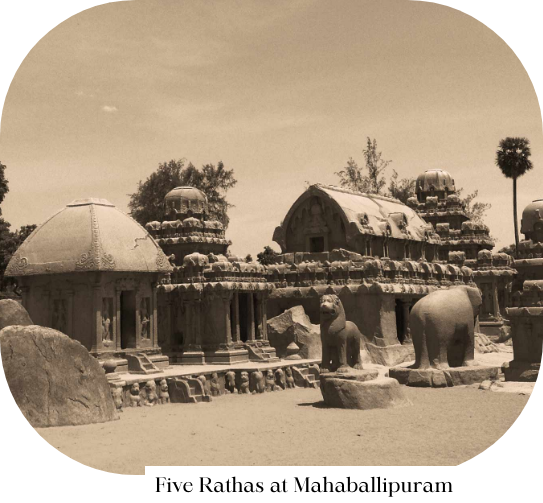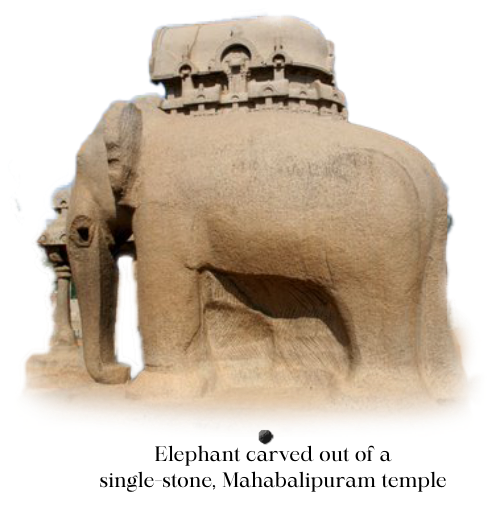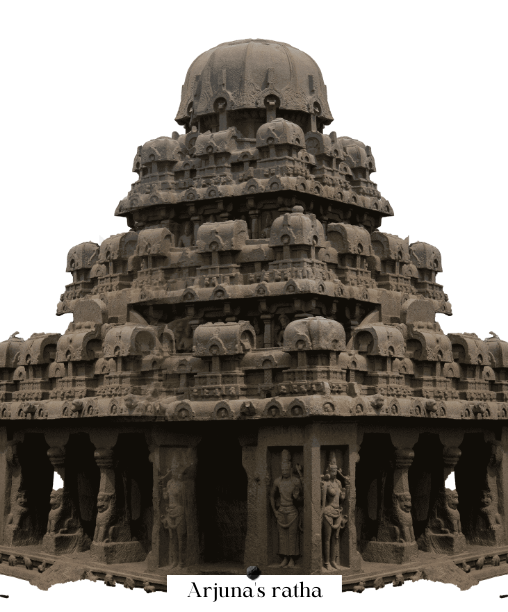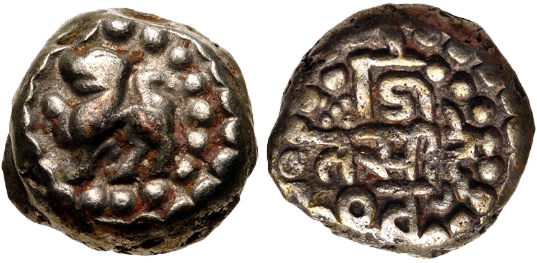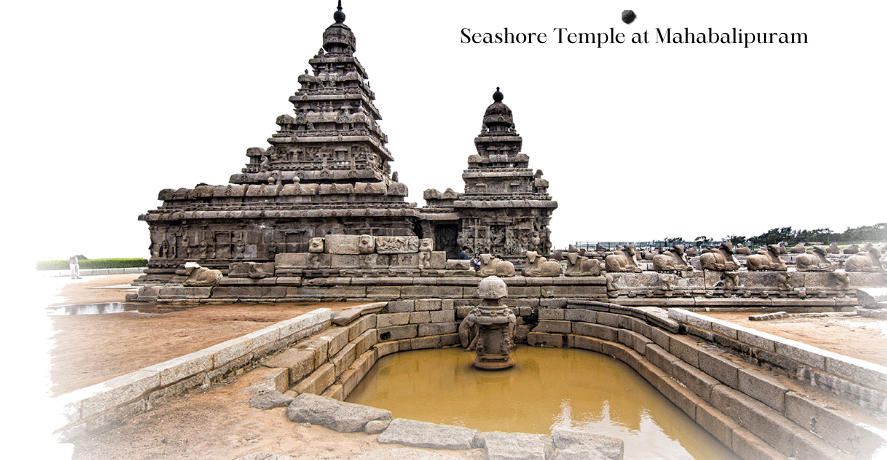Kingship
The King was the head of the central Government. The Pallava kingship in its
early days was in a sense hereditary because only a legitimate male member of
the family succeeded to the throne. But from the time of Simhavisnu (556-590
CE), the rule of primogeniture was not strictly followed. In a few cases, it
appears that a younger son or the brother, or even the cousin succeeded to the
Pallavas throne after a particular king. The Kasakudi plates say that
Bhimavarman, Simhavisnu’s brother, was king for some time before Mahendravarman
I (590–630 CE).[4] We also have a reference to the election of a king
during the later Pallavas. When Paramesvaravarman II (725–731) died during the
battle with the Chalukya and Gangas and Pallavas kingdom fell into anarchy, the
responsible people of the state thought that the ruler that succeeded him should
be a man of ability and resource, and not a child taking over for a father who
wasn’t very efficient at governing the kingdom. They elected Hiranyavarman, a
veteran administrator at the time whose selection would have been justified
based on his experience in administrative and military affairs. The legitimate
successor, Chitramaya, who was comparatively young and weak at that time and
even later when he grew up, appears to have not been favoured. The detail of
this election is registered in the important constitutional document of the
Vaikunthaperumi temple.[5]
However, the actual successor to the Pallavas throne after the death of
Paramesvaravarman II was Nandivarman II, son of Hiranyavarman who belonged to
the collateral line of Pallavas called the Kadavas. He was born into a local
dynasty with Pallava ancestry in the country now known as Champa (modern-day
Vietnam). When Paramesvaravarman II died without a suitable heir, the ministers
and advisors set out on an expedition to neighbouring kingdoms and distinct
lands to find a prince of the original line. When they reached Kambujadesa,
which is now part of Cambodia and southern Vietnam, they found that Nandivarman
II was from the original lineage and willing to take the throne. So, he was put
on the throne of the Pallava country. As he was a minor, his father was elected
to rule the kingdom until Nandivarman II take responsibility for the state. On
ascending to the throne of the Pallava kingdom, he (Nandivarman II, c. 731 CE –
c. 796 CE) proved to be an able administrator and military
general.[6] Here we have not only an instance where the ministers and
other officials of the Pallavas kingdom took part in the election of the
rightful king but also an example of the political responsibility of the people
as a whole.
The Pallavas kings bore many imperial titles like Maharajadhiraja,
Dharmamaharaja, and Dharmamaharajadhiraja which reflect their
character of not only a conqueror but also the preserver of righteousness
(dharma). Later Pallava kings also tried to relate their ancestry to Lord Brahma
which can be interpreted as an attempt on their part to claim for themselves
divine origin. To add to their reputation, Pallavas kings also performed Vedic
sacrifices such as Vajapeya and Asvamedha ceremonies. The
Pallava kings were well-learned in all arts and highly cultured. For example, we
have Mahendravarman I as an author of Sanskrit plays, a great musician, and a
royal artist in every way. Narasimhavarman II fondly known as Rajasimha Pallava
and Nandivarman II again are described as kings well-versed in all the
literature of philosophy and polity.[7] Under the Pallavas, the crown
prince called Yuvamaharaja and even his wife occupied a sufficiently
high position in the matter of administration.[8]
Council of Ministers
It is widely agreed upon by ancient Indian writers on a polity that a king should
always act in conjunction with a group of ministers and rule with their
cooperation. The administration of the Pallavas government seems not to
contradict the advice of the ancient lawgivers. A contemporary Sanskrit epic
poem Kiratarjuniya by Bharavi read, “Prosperity of every kind delights
to live there where kings and ministers are always mutually well-disposed.”
[9] Evidence shows that the Pallava Kings rule in accordance with the
ideal of Bharavi in seeking the help and advice of their ministers. State record
suggests that ministers earned the praise of kings by rendering faithful
service. That Pallavas kings have a council of ministers of their own is
attested by the Vaikunthaperumal inscription which significantly introduces the
‘Mantri Mandala’ of the Pallavas government. The council of officials
(Mantri-mandala) is listed first among the group that elected Nandivarman II and
crowned him king. The feudatories and other people come only after
it.[10]
Amaytas and Mantrins seem to be the designation of the
ministers in Pallava’s rule. A Mantrin is typically thought of as a
diplomat, whereas an Amatya serves in a more advisory role. On the
Hirahadagalli plates, the Amatyas are shown to have been told about a
brahmadeya grant that the king made from his capital Kanchi. In all probability,
he was the adviser to the king or supervisor of the civil
government.[11] The ministers govern part of the Pallava kingdom and
enjoyed the revenues in return for services to the central Government. The
ministers also carry out the order of the king concerning the endowments made.
So, we can see the ministers of Pallava had executive responsibilities as well.
They provided assistance and service not just in administrative matters but also
on critical issues relating to the State’s foreign policy. Few of the
Mantri-mandala’s ministers appear to have been trained for war and thus have
military experience. The Purohita who served as the adviser of the
king, from the earliest times in Indian history, was an important member of the
ministry. References show that sometimes, the offices of the minister and the
royal priest were combined into one.[12]
Interestingly, the ministers under the Pallavas bore the distinguished titles of
royalty. But the most noteworthy about the ministers of the Pallava Government
was that their selection followed the instructions made by Manusmriti,
Brihaspati Smriti, Mahabharata, and Kamandaka’s
Nitisara on the selection of the minister. The enumeration of the
qualities of a few ministers observed in the Pallavas inscriptions proves this
point. Kasakudi plates contain a description of one of the ministers of
Nandivarman who adopted the title of Brahma Sri Raja read as:
"Brahma Sri Raja who was a friend of the world; who was filled with all
virtues as the ocean with a heap of gems; who was famous, modest, handsome
and long-lived; whose speech was never rough; who was distinguished among
men; who just like Brhaspati, the chief minister of the Lord of the Heavens,
was the chief minister of the Pallava king Nandivarman, the Lord of the
earth and the delighter of the peoples’ eyes and hearts; who was refined by
nature and through education; who was foremost among the learned; firm and
brave; who possessed the full and unshakable splendour of the Brahmana and
Ksatriya castes; and loyalty to the glorious Nandipotaraja lasting as long
as the moon and the stars endure; who was the mainstay of his family; who
was an eldest son; who in his disposition was like Siva incarnate; who
excelled in all virtues and who was the eldest priest."[13]
Administrative Officials and Their Functions
Under the Pallavas, there was the evolution of a new type of administration that
imposed a superstructure of the northern ideal of government upon the local
institutions of the south as can be gleaned from the Hirahadalli Copper plates
of Sivaskandavarmam, Omgodu plates of Vijayaskandavarman, Rayakota plates of
Skandasisya and Kuram plates of Paramesvaravarman.[14]
Vishayikas were put in charge of the Rashtra (province), which seem to
be the same as mandalas while the smaller divisions such as the
Koshtakas or kottam and Gramas were placed in charge
of desatikadas and vapittas. Vapittas took care of
royal interest in the villages. The ministers called Rahasyadikadas or
Rahasyadhikrtas (privy councillors) were consulted on state matters by
the kings and enjoyed royal trust. The Mandapis were the class of
officers assigned for the collection of customs and their office was called
mandapa. The Gumikas, officials referred to in Pallavas
epigraphs; seem to have been forest officers. Among higher officers of State are
mentioned by name a mahadandanayaka (commander-in-chief) in an
inscription of the Nandivarman.[15]
In the inscription of the early Pallavas king, Sivaskandavarman, who ruled from
275 to 300 CE, is preserved the longest list of administrative officials. The
list comprises the rajakumaras (princes), senapati (general),
rashtrikas (governors of districts?), desadhikritas or
deshadhipatis (officer in charge of province), grama-bhojakas
(village free-holders?), amatyas, arakshadhikritas (guards),
gaulmikas (chiefs of military outposts), tairthikas (overseers
of fords), naiyogikas, bhatamanushyas (soldiers), and
sahcharantakas (spies). Sahcharantakas watched over the
conduct of the people. Reference is also made to yuktas who were
members of the central as well as the local government. Other important officers
were the tirthikas who took charge of bathing places and ferries and
nayakas who looked at garrisons established amid the country.[16] All
these indicate that an elaborate system of governmental organization was
developed by the Pallavas.
Village Administration
Villages and towns were administered by local assemblies, i.e. the
Sabhas and the Nagarattaras. In villages and towns, measures
were taken to have a comprehensive land survey as well for water supply and
other important local works.[17] By the time of later Pallavas,
village organizations used to manage general village administration economic,
financial, and judicial functions. Early Sanskrit inscriptions where documented
the minute details of the gifted lands shows the efficiency of the land survey
departments at the village level. The Umvapalli plates provide an example of
this type of comprehensive land survey. Such management of the village reflects
that the system of government and administration under the Pallavas even at the
local level was highly systematic and bureaucratic as well.[18] The
record of this period tells us that the village and the central government
maintained all the arable and wastelands, tanks, lakes, wells and rivers, rocks,
and even trees. Irrigation, in particular, was very carefully looked after by
the Pallavas. The village headman known as Viyavan involved in the
village administration was entitled to certain remuneration from the village
government.[19]





